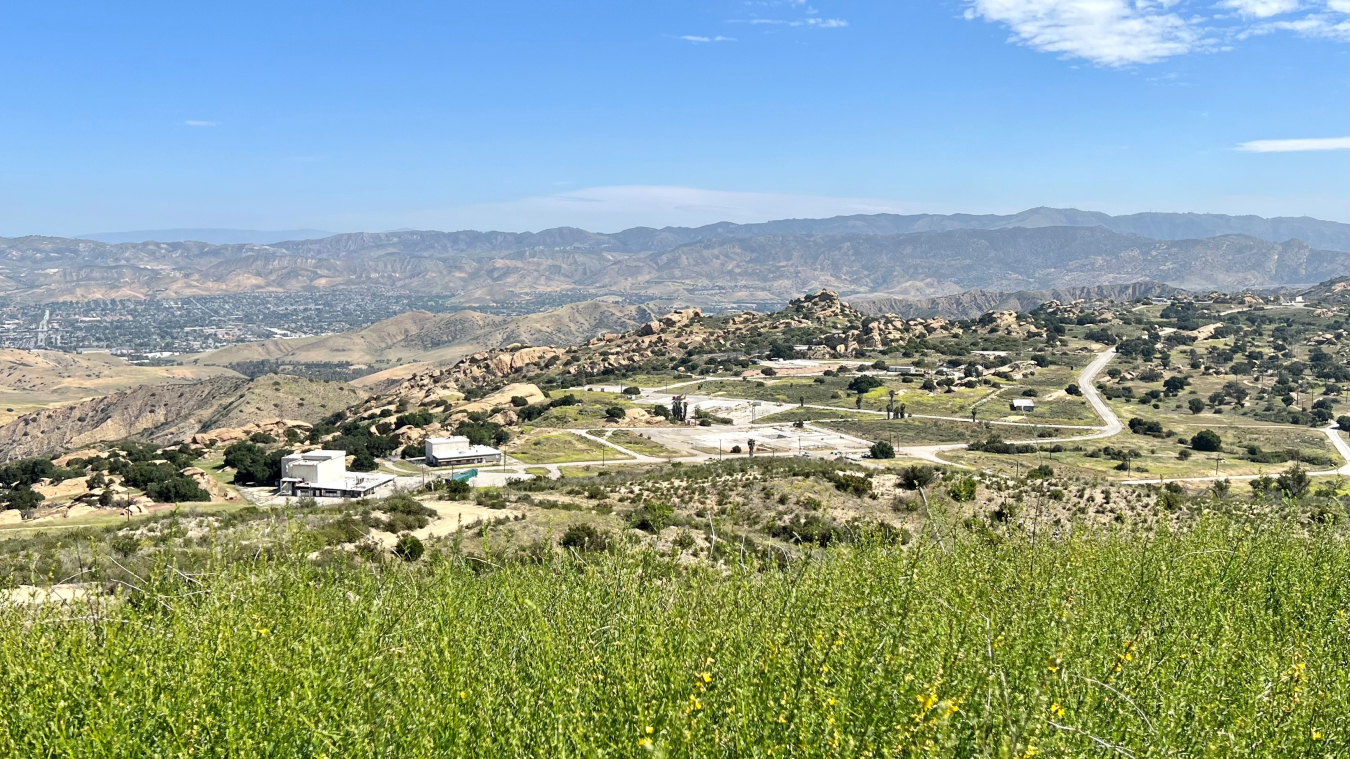EM is entering the next phase of cleanup at the Energy Technology Engineering Center (ETEC) after achieving a pivotal milestone: completion of demolition of the final 18 DOE-owned buildings on the Santa Susana Field Laboratory (SSFL) site.
Office of Environmental Management
August 30, 2022SIMI VALLEY, Calif. – EM is entering the next phase of cleanup at the Energy Technology Engineering Center (ETEC) after achieving a pivotal milestone: completion of demolition of the final 18 DOE-owned buildings on the Santa Susana Field Laboratory (SSFL) site, with trucks safely carrying away remaining demolition waste in January.
EM Update spoke with Josh Mengers about where EM is going next with the cleanup, what’s happening now, and his aspirations for the cleanup as he steps into his new role as federal project director at ETEC.
Q: What is happening at the site now that building demolition is complete?
A: Right now, we are performing continuous environmental monitoring with DOE maintaining four of 14 air monitoring stations around the perimeter of the site. DOE also conducts ongoing groundwater monitoring and interim cleanup actions, and reported collecting more than 2,000 groundwater samples for analysis and removing 9,000 gallons of contaminants from the groundwater at ETEC. These samples come from the more than 100 wells that DOE installed at the site to monitor, analyze and help understand groundwater contamination and inform our cleanup actions.
Once the California Department of Toxic Substance Controls (DTSC) completes its environmental impact report (EIR), DOE will execute our full cleanup plan that was outlined in the Department’s Record of Decision for Groundwater Remediation. This includes monitoring the natural attenuation for areas with less contamination, while in other areas we will implement more aggressive strategies such as expanding our pump and treat, conducting an in-situ treatment pilot study and removing impacted bedrock.

Q: What are the next milestones in the cleanup?
A: DTSC is working to complete their final EIR — a prerequisite to additional cleanup action. To prepare, DOE is currently working with DTSC on the approach for groundwater and soils remediation that we will implement after the EIR is certified.
The next milestones will come from collaborating with the State of California to reach a workable approach for the soil remediation at ETEC, and from DOE publishing a soils cleanup record of decision. I am eager to get started on the next phase and achieve the Department’s goal: to clean up the ETEC site in a way that is protective of both the surrounding communities and the environment.
Q: What excites you about taking on the federal project director role for EM’s cleanup at ETEC?
A: I have never shied away from a challenge, and I am excited to build on the work of previous project directors. I look forward to the real opportunities at ETEC to make a positive impact on the Department’s cleanup at SSFL. This site is unique in so many ways, from the ecological preservation challenges to the multiple responsible parties and engaged stakeholders involved in the cleanup process. I’ve already met a few stakeholders, and I look forward to listening and learning from the many voices from across our community who care so deeply about this cleanup.
I also love the history of ETEC and SSFL. The cutting-edge research, development and testing that happened here fascinates me. I am honored to play even a small role in a site that had the first commercial nuclear power plant to provide electricity to the public and DOE’s liquid metal research center of excellence. I also “geek out” about the space-flight applications from the rocket testing that occurred in NASA’s area of the field lab, and the System for Nuclear Auxiliary Power reactors that developed compact, lightweight reliable power sources for use in space. The space applications hit home for me, not only because of my degree in aerospace engineering, but also because of family history. My dad spent his career as a civil servant with NASA where he finished as the mission manager for the Far Ultraviolet Spectroscopic Explorer satellite.
Getting the opportunity to talk with some of the previous site staff and hear their stories of the groundbreaking research and development conducted here is certainly a perk of the job, too.
Q: How did you come to the role of federal project director at ETEC?
A: I have always been dedicated to serving others. After college I joined the U.S. Army and served as a captain in the Corps of Engineers. I joined the Department in 2012 because of my passion for our environment and to continue serving the country. I spent my first years with DOE in Washington, D.C., working on renewable power projects in the Geothermal Technologies Office to further enhance our ability to access the Earth’s heat as a reliable carbon-free energy source.
My wife and I moved our family to Simi Valley in the summer of 2019 where I started as the project manager here at ETEC. As I step into the federal project director role, I am building out a team that can help DOE achieve the goal of restoring this beautiful site to a safe, open space for the local tribes, nature and the community to enjoy. Just this month I met with the U.S. Fish and Wildlife Service staff for a joint seed collecting expedition for the Braunton’s Milk Vetch, an endangered perennial that blooms onsite.
My environmental passion and background, combined with my Ph.D. in aerospace and mechanical engineering, really help me respect the history of the site while giving me the tools to implement a plan to restore it for the local community to safely enjoy, my family included.
To receive the latest news and updates about the Office of Environmental Management, submit your e-mail address.

